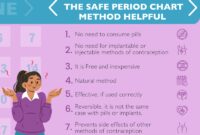How To Remove Efflorescence From Brick Pavers – After installing your wall or wall project, you may notice white powder on the surface. Take a look at your new deck and you might wonder, “What’s that?”
Rest assured that this is a natural phenomenon called “blooming” and is nothing to worry about. Before you close the book on your next outdoor project, here are some things you should know about grout and the best ways to clean your pavers.
How To Remove Efflorescence From Brick Pavers

A white powdery mineral deposit that sometimes forms on concrete, brick, stone, or other porous surfaces. Technically, it consists of natural calcium salts.
How To Clean Concrete Pavers
When cement and water are mixed and undergo a chemical reaction, calcium hydroxide is produced. As the concrete dries, this calcium hydroxide reacts with the carbon dioxide in the air to form calcium carbonate. This calcium carbonate appears on the surface as a white solid. Repeated cycles of watering and drying promote the migration of calcium to the surface, which causes it to form.
It is important to note that even if spots or stains appear on the surface, the contamination does not affect the strength or durability of concrete paving. Its effect is only aesthetic and temporary.
If you want to clean the flowers, you can use a flower cleaner. These products are specially formulated to dissolve stains and remove dirt from floors and concrete surfaces without damaging or damaging the paint.
Use a regular dish soap and water solution and a stiff plastic brush to begin the maintenance process. Avoid using a wire brush as it can strip the wires and leave rust spots on the surface. If the bloom continues, you can explore the option of using a flower remover available at most national team retailers. Just follow the directions carefully, as these cleaners are usually acid-based and can cause minor surface discoloration. Test a small inconspicuous area first to check for any side effects.
Does Your Brick Patio Need A Restoration Or Minor Repairs?
If the basic conditions that caused the bloom in the first place, i.e. water intrusion, are maintained, there is a possibility of a rebloom. Inadequate drainage in the garden can cause water to constantly drip onto the concrete and carry salts to the surface. As a result, the probability of flower recurrence increases. It’s important to be aware of the common signs of leaking pipes, broken waterproofing, high groundwater levels, or poor drainage.
It should be noted that rain alone cannot completely eliminate the problem, especially if the flowers are deep or the surface is not exposed to constant rainfall. In such cases, additional cleaning methods or treatments are necessary to solve the problem.
Yes. Before placing the fillings, they must be free of flowers. If you decide to wait for the flower to fade over time, it is best to wait 2-3 months (or up to a year) before sealing, so that the flower is completely gone.

If you have more questions, we can visit your local Outdoor Ideas Center or speak with a landscape contractor or dealer for expert guidance and assistance.
How To Clean Pavers: Guide To Cleaning Any Stain
How to Remove Leaf Stains from Leaves There is nothing worse than seeing your beautiful floors stained with leaves. Can I clean it with vindex? Should I put some bleach on it? Should I replace the pavers? All these questions may be on your mind. more
Removing Stains from Paving Stone You have a beautiful outdoor living space, but as people come and go and the seasons change, you may notice that enjoying the space has left some unsightly residue on the pavers. more
Thru-mix vs. At Face-mix we refer to our thru-mix products as “classic” pavers and our face-mix products as “Enduracolor” pavers. We also offer a range of products called “Elegance”. more
How to clean natural stone Life happens. Although your lawn, sidewalk, or driveway requires very little maintenance, it’s natural that some discoloration will develop over time. Barbecue spills, rust stains on patio furniture, bird droppings, and oil stains can damage your natural stone surface. Fortunately, you can remove most stains with these helpful tips. more
Srw Products Efflorescence Cleaner
There is some debate about whether or not you should use a sealer on concrete pavers. Some homeowners use a sealer to deepen the color of their floors and protect the surface from stains. Others prefer the natural look and low maintenance of covered floors. more
Working with a licensed contractor is the best way to go. Our UACs have the knowledge and experience to make your dream project a reality and deliver amazing results that exceed your expectations.
Explore endless design possibilities through our catalog of design ideas. Browse our extensive portfolio of floor and wall products and get inspired by our great design projects to fuel your creativity.

See the beauty and quality of our flooring and wall products by visiting your local Outdoor Idea center. Our knowledgeable and friendly staff is available to answer any questions and provide free product samples. How to Build an Elevated Paver Building a paver is a great option for homeowners looking to expand or elevate their outdoor entertaining area. , a place of rest. In this blog […]
Interlock Efflorescence Removal Service
How to build stone steps for your terrace? Decks offer a great way to use your outdoor space – enjoy dinner with family and friends, host summer parties and barbecues, or build a new home […]
Chances are you’re looking at a flower. Let me explain. When you boil it down, pavers are just small concrete blocks. The fact is that concrete does not dry quickly; increases over time. During the treatment, calcium hydroxide (in wet form) comes to the surface and combines with carbon dioxide in the air. These two elements combine to form calcium carbonate, which is also called efflorescence.
In short, your pavers won’t fall apart; are cured. What you see on the surface of the landscape is salt and soluble deposits that can be easily removed. Although efflorescence can look scary, rest assured that it is generally harmless and does not affect the structural performance of the concrete.
Getting flowers is very easy. But don’t be naive; Failure to follow our instructions carefully may result in serious injury.
Efflorescence Removal From Title & Concrete In Melbourne By Experts
First, sweep or aerate the garden thoroughly when the landscape is dry. We used a shop broom, but you can blow the leaves with a blower.
A garden hose will only work if it reaches far enough to wet the entire paving surface. Attach the spray nozzle, turn on the hose, and turn on the water so that you are ready to quickly rinse the hard surface after spraying the cleaning solution.
You want to use a light solution of about a 12:1 water to acid ratio, or 10 grams of acid for every gallon of water. Notice:

A standard two-gallon irrigation can add 1.8 gallons (236 oz) of water and 20 oz of acid.
Southeast Softwash Llc Introduces Efflo Go! For Removing Efflorescence
We recommend that you pour the water first and then add the acid. We have found it helpful to use an inexpensive plastic measuring cup to measure and add muriatic acid. Otherwise, you risk overfilling the jar with water and spilling the mixture.
CAUTION: DO NOT USE METAL CONTAINERS WHEN HANDLING ACID. Acid damages vessels and causes loss of property.
When working with muriatic acid, wear safety glasses, a long-sleeved shirt, pants, boots, and gloves to protect your skin. Although muriatic acid is natural, it is still an acid and can cause burns or rashes if it comes into contact with the eyes or skin.
Using an acid mixture in a bucket of water, cover a small area of your rocks thoroughly, but do it quickly. You want the mixture to do its job, but if you leave it on too long, the acid will damage the surface of the pavers.
Paver Sealer 101: Seal & Protect Your Brick & Concrete Pavers
Divide your entire disease into small treatable areas. You want to cover and rinse each area quickly so the muriatic acid doesn’t sit too long. Although muriatic acid will not kill plants or weeds, try to keep the mixture within the boundaries of your landscape.
Muriatic acid breaks down the micron-thick layer on your floors, resulting in discolored water or foam on your floors. Don’t worry! This is normal. After cleaning, your view will be like new.
It only takes three minutes for muriatic acid to break down the remaining salt on your stones, so it washes away easily, returning the stones to their original color and life.

Smooth surface stones like our La Lastra™
How To Remove Stains From Block Paving
How to remove efflorescence from brick, how to remove efflorescence from pavers, how to remove sealer from pavers, how to remove mold from pavers, best way to remove efflorescence from brick, efflorescence on brick pavers, how to remove stains from pavers, how to remove efflorescence, remove efflorescence from brick, how to remove weeds from pavers, remove efflorescence from pavers, how to remove efflorescence from brick walls


